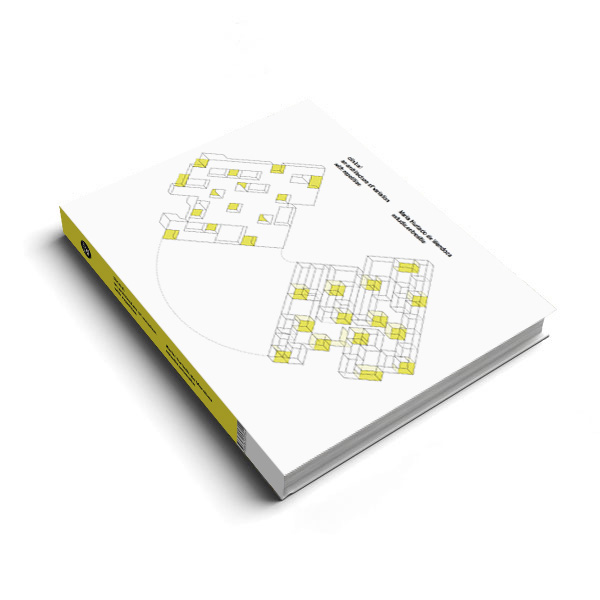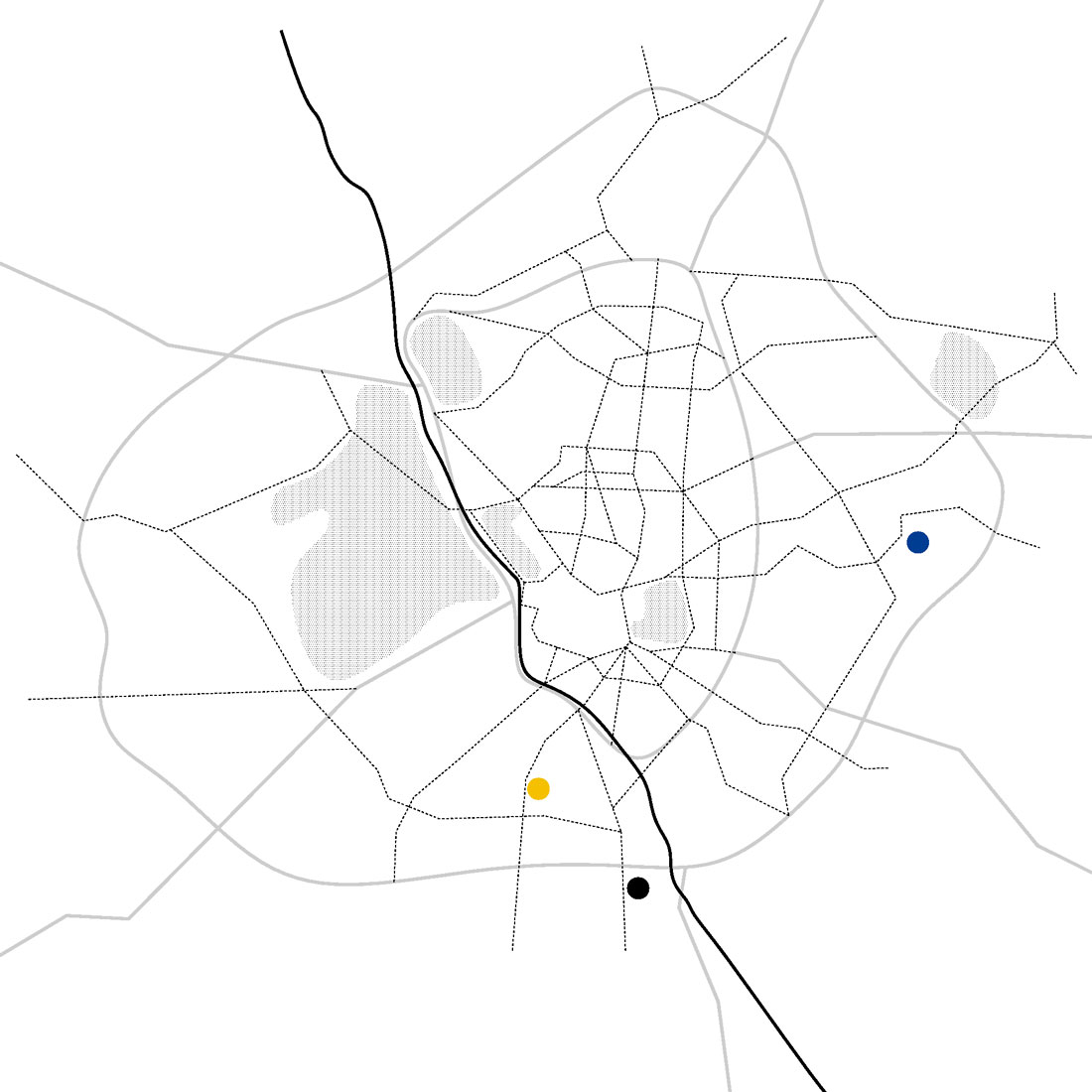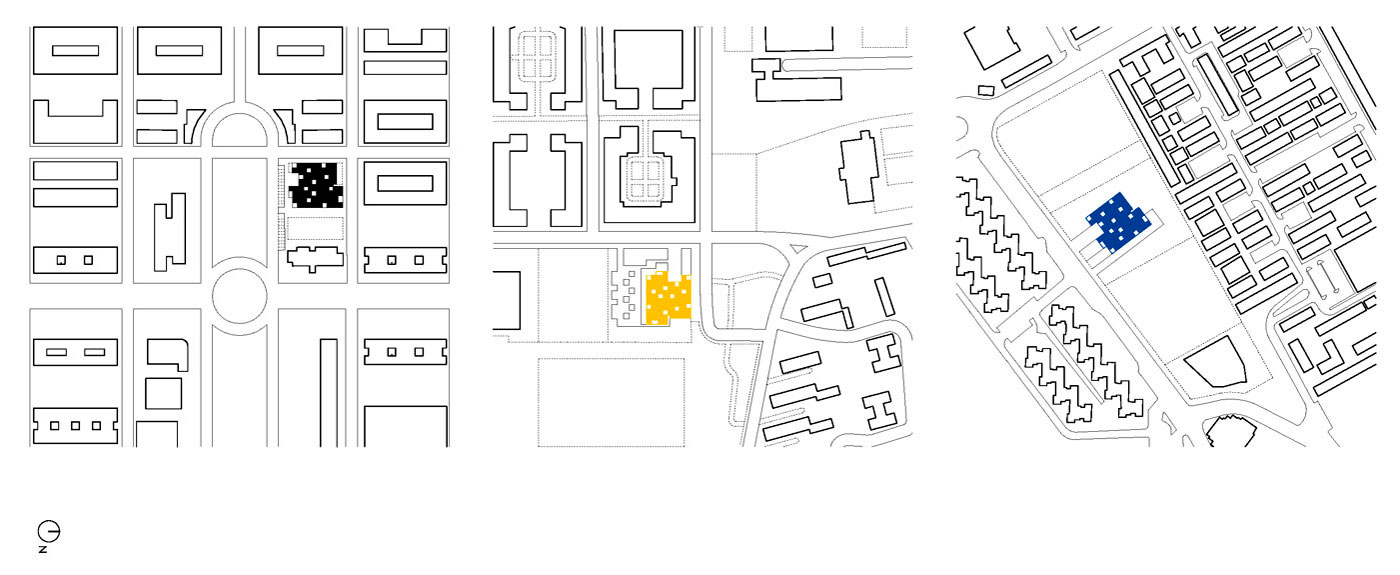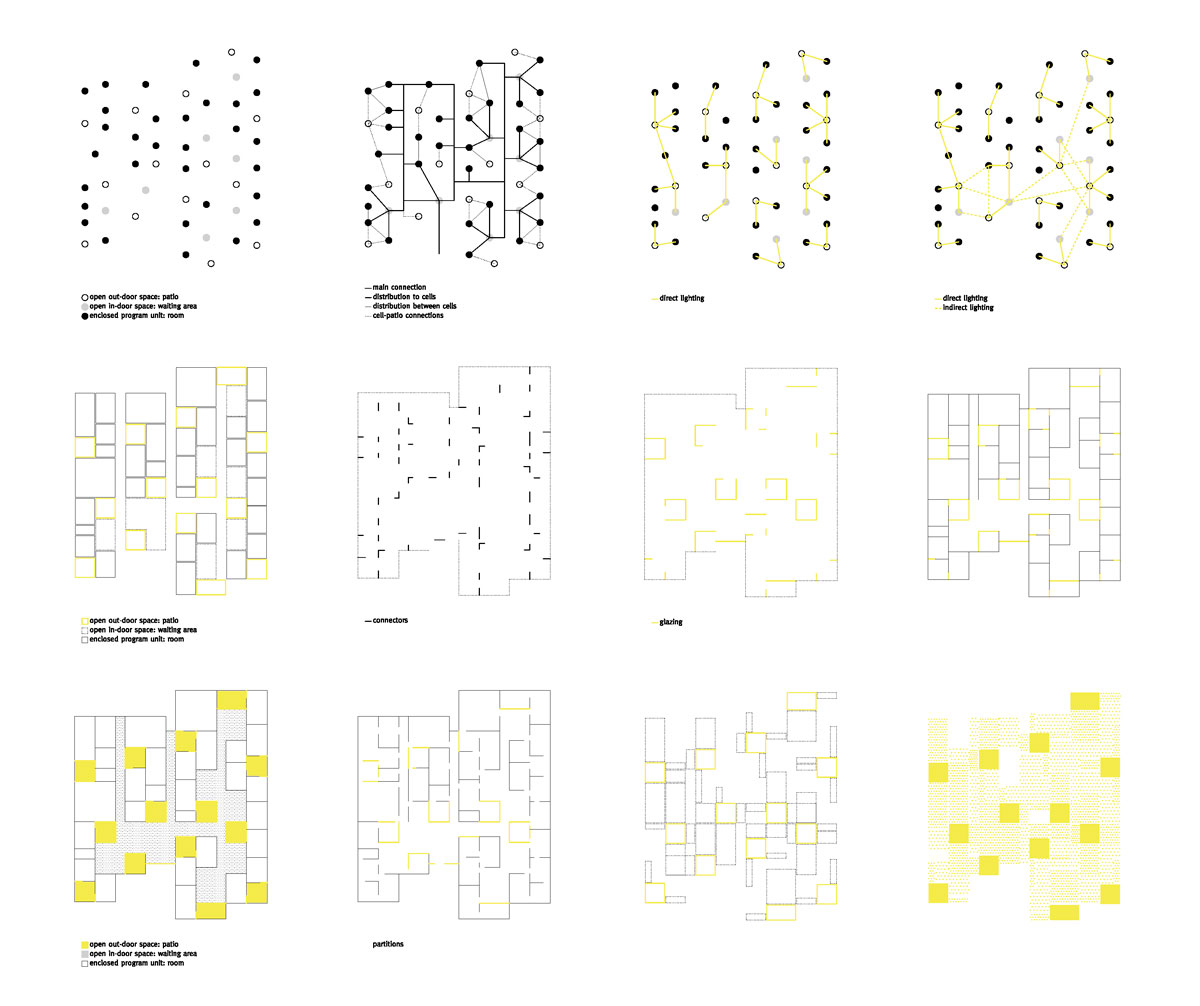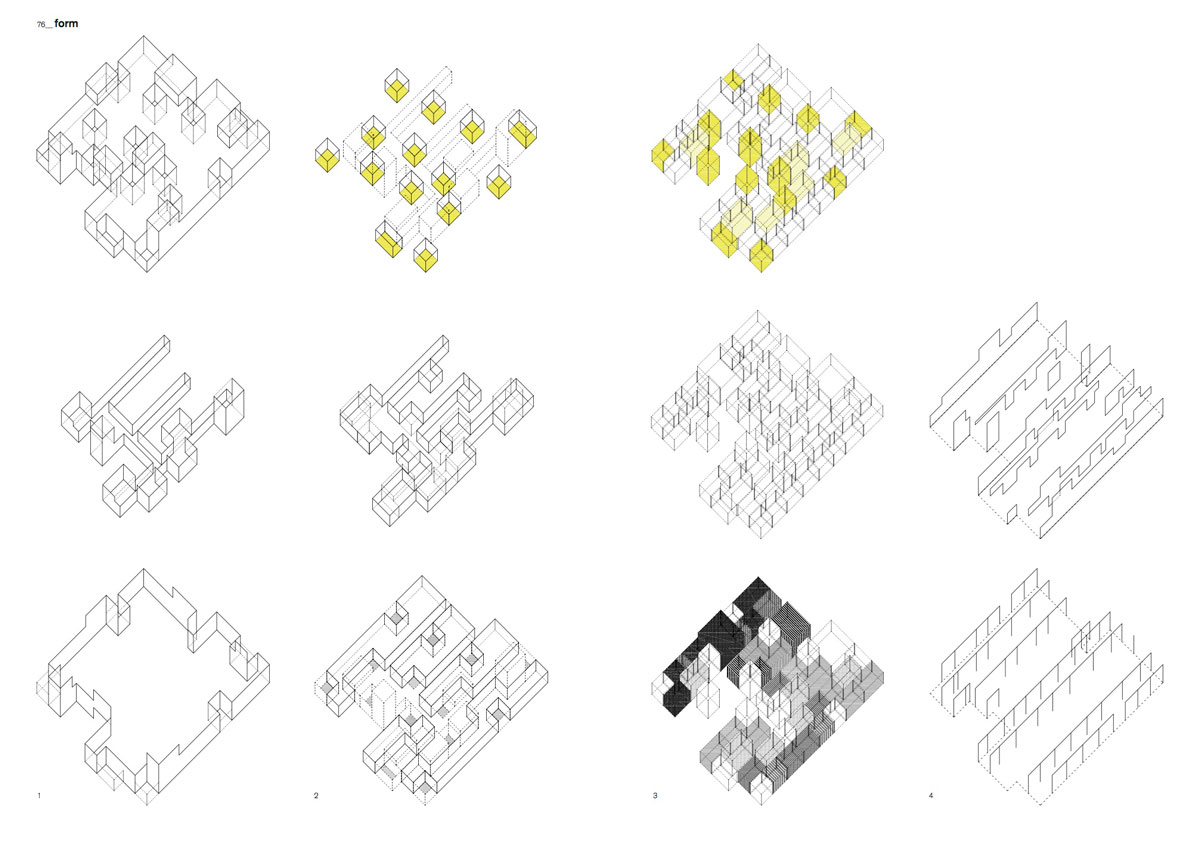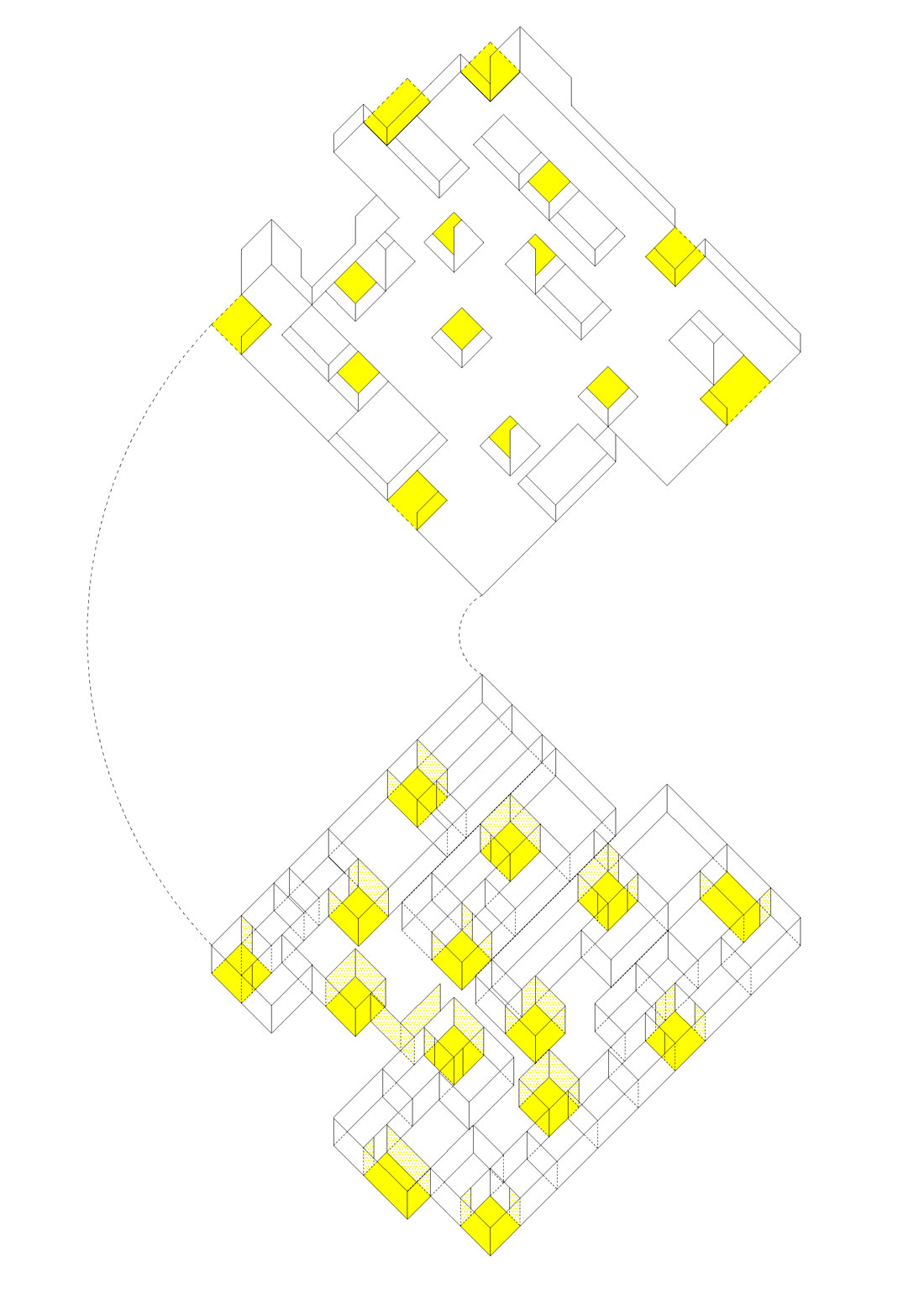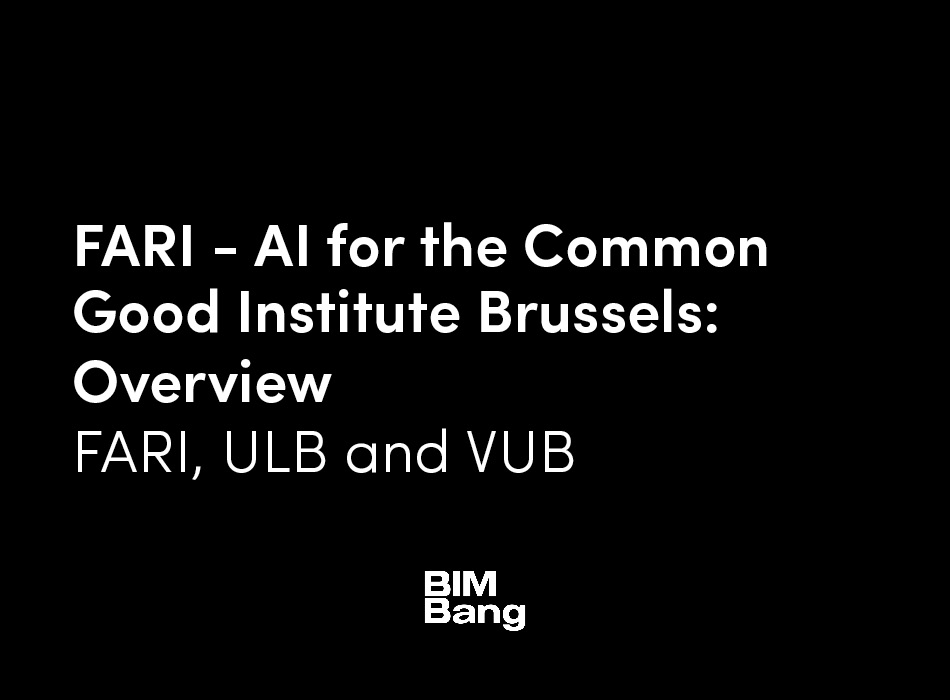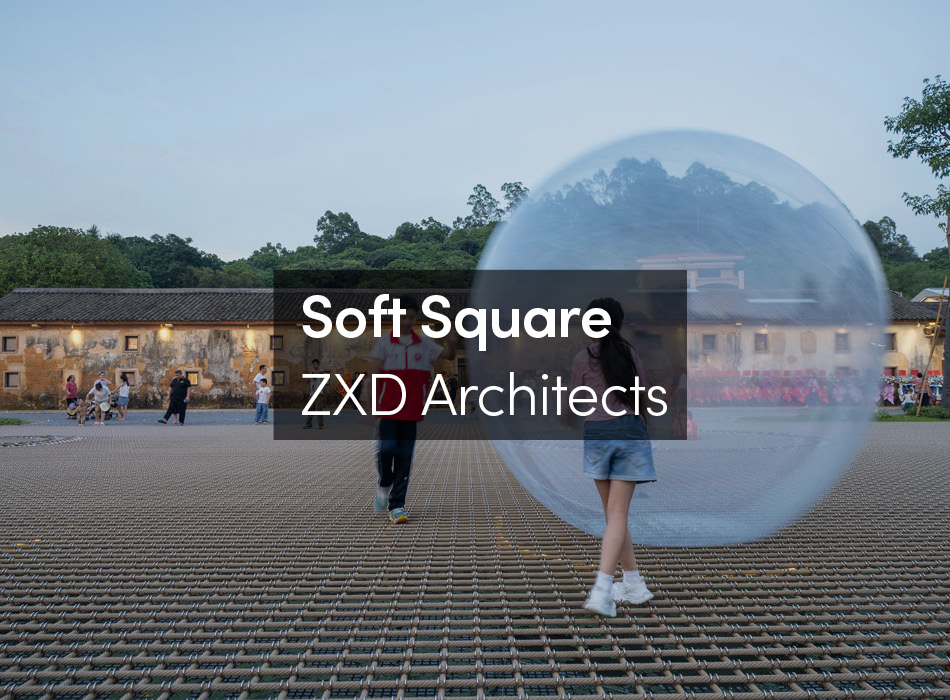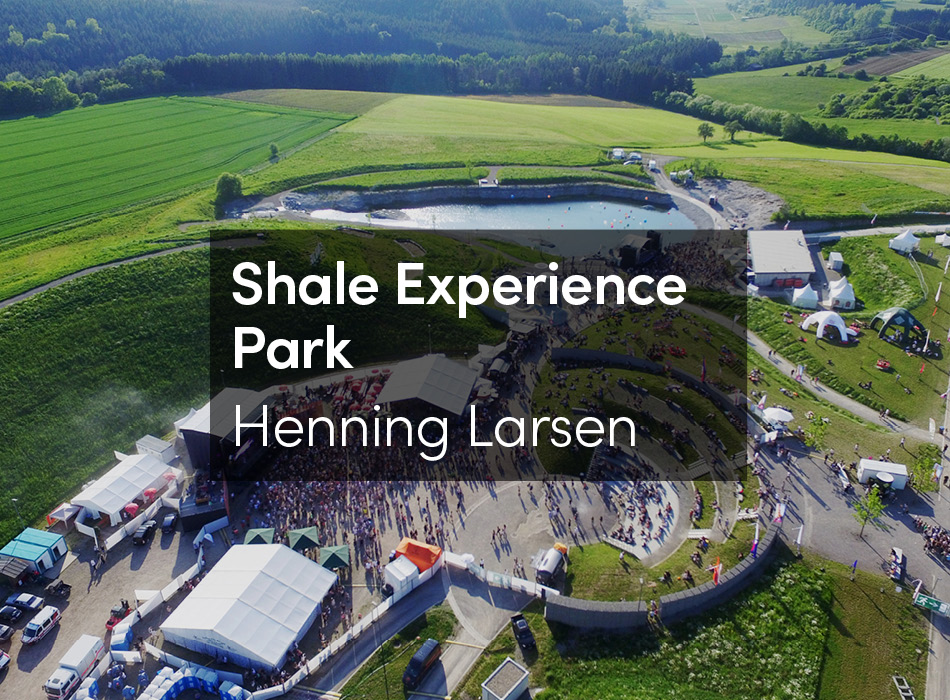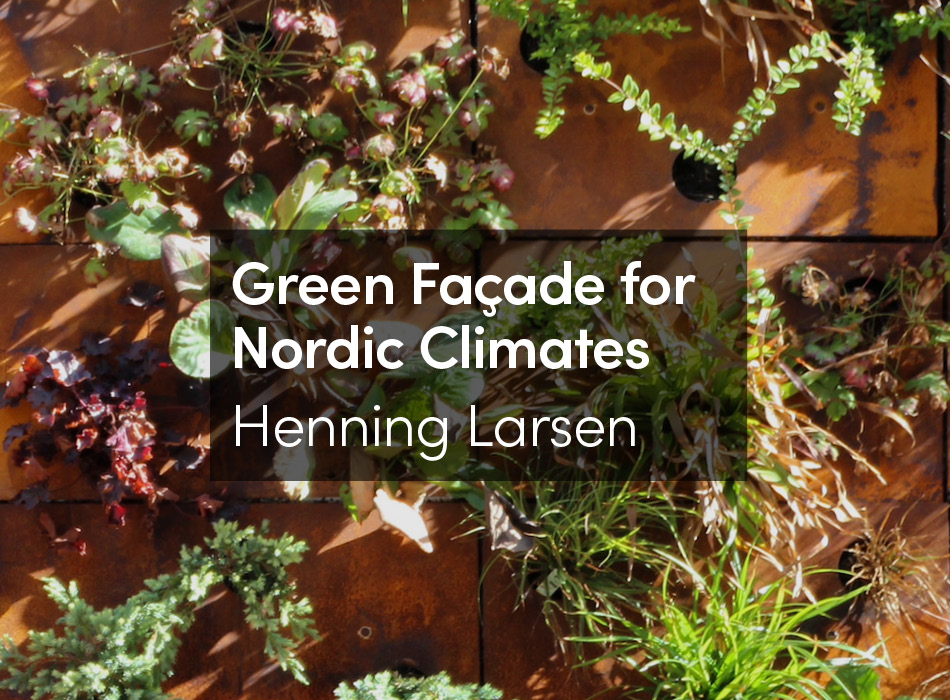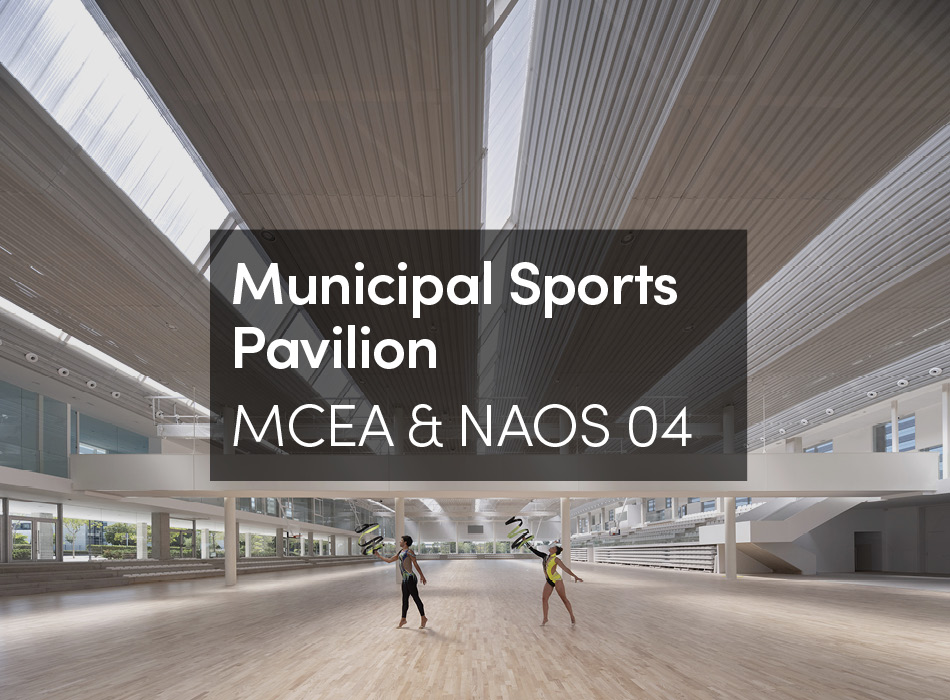A few years ago estudio.entresitio won an unusual competition held by the public healthcare system of Madrid which consisted of building two healthcare clinics, both with the same budget and the same design in two different locations. From this intriguing starting point, they explored the possibilities of an autonomous architectural system that, free from a specific context, could operate on the ideas of materiality, structure and order within the architectural space, with the same interior structure and a distinct outer shell. Subsequently, after winning another competition with a similar design in a third location with a suitable building site, a third building was proposed that would also use the same layout and a distinct exterior. The set of buildings, referred to as “3×1”, is resonant and suggestive in relation to architectural creation and the artistic notion of variation. In Clinical. An Architecture of Variation with Repetition, published by Actar, María Hurtado de Mendoza, professor at the New Jersey Institute of Technology and founding member of the studio, describes the experience and presents an insightful reflection, enhanced by a superb visual presentation, on the play between difference and repetition in architecture.
At one point in her cogent dissertation, organized in neatly sequenced categories such as Conciliation of Opposites, Programmatic Bars, Field Condition, Difference and Repetition, Scarless Merger or Towards the Nonstandard, the task of constructing the same building several times, unheard of in architecture, becomes a learning experience. We praise the architects who were able to make the most of the challenge, understanding that undertaking the three buildings demands a high degree professional skill; and that now, through professor Hurtado de Mendoza’s academic determination, they are generous enough to share the project in the spirit of constructive collective teaching. Although the book is concise, intentionally focused on the three healthcare center buildings, it includes many insights into other architectures incorporated in the text, exploring concerns that can be extrapolated to architectural thinking universally, constituting a handsome example of how the strength of any research lies in approaching the familiar issues and taking them further, perhaps to another level.
We only need to look as far as milestone works by Frank Lloyd Wright, Mies van der Rohe or Le Corbusier, or before Andrea Palladio, to encounter examples of the notion of the series in architecture. Although in the radical literalness of the proposal, to build the exact same form on various occasions, we discover an exceptionality that allows reflections to percolate from the core of the practice. We could also consider that other kinds of projects exist that have repeated the same layout in different environments, working with the logic of the prototype or a modular system, but what we value in this triplet for Madrid, for its size and function, is its scope which distinguishes it from other endeavors. We should also keep in mind the many studies on architectural typology, several astutely mentioned by the author, whose specificity allow these three projects to carry so much weight and address vital questions in architecture, nearly achieving manifesto status. The experience gathered within the book is among the most interesting and instructive inquiries undertaken in the last several years.
Arne Jacobsen occasionally commented on how he often started projects by using the same matchbox to limit himself in deciding which side would be the bottom or support: upright, it could be a hotel, like SAS; lying on its long side it would make a nice town hall, like the one in Rødovre; in its most extended position it would do well as a school, such as the one in Munkegård. Then, clearly, the size would be scaled according to the designated end use or to the requirements of the building site as well as to other parameters, which in turn would guide the articulation of interior distributions. In contrast with this Nordic efficiency built on prisms of identical proportions like default open space, there was another approach, cynical and surreal, that of Rem Koolhaas, of changing the scale and use of the compositional framework of a house and turning it into the Casa da Musica de Oporto, a device that on occasion students would employ from one course to another or that architects would carry over from one competition to another. Most recently, it could be argued that certain architecture seems compelled to invoke any formalist flight of fancy eradicating any reflection on form in the defense of creating projects, as if the challenge were to find other reasons that would avoid the necessity of talking about form, nearly abandoning it altogether. It is a strange paradox in which architecture is nothing but the effort to give form to ideas which, by definition, lack form, and in a certain sense, is necessarily formalist. Part of the decided interest in Entresitio’s research lies precisely in that once a form becomes the generator of a system of relationships which resolves the plan well, simple but cohesively nuanced in the expansion from one unique layout through openings and variable heights as an open-air low relief, the process of refinement can focus on other issues, evoking the poet Paul Valèry’s maxim, frequently cited by Rafael Moneo, “greater freedom is borne of greater rigor”.
The book’s discourse, presented by professor Hurtado de Mendoza at various conferences, has transformed, seemingly by sublimation, into a brilliant way by which to narrate her own trajectory, establishing connections with other projects from the studio and with other valuable lessons acquired throughout her academic journey. It is concise, elegant, discreet and, in keeping with the architectonic, it is eminently visual, intentionally distancing itself from the lyrical, although a second or even a third reading, just like its built form, offers a fertile backdrop for the imaginative. Within the limitations of project processes we have all at some point desired to have the option to try alternative materials and lamented having to choose one in the end. These three buildings would have made the dream of seeing the same project in three different versions feasible when the shape was converted into a constant and the materiality turned into a variable part of the equation, having muted previously those algorithms related to the plot and its surroundings and not exactly with the place which would justify the treatment of the overhead light through the latitude. We could also imagine the experience of a visitor, patient or doctor, who has without realizing it been in more than one of the buildings, with perhaps an inkling of the coincidence, would expect to find a different environment at the exit, as if the three medical centers were location exchangers like the phone booths in the Matrix. Among these plausibilities we could ask what would be the next steps in the series, if, as the project deserves, new pieces were added to the collection. We could ask how many other materialities would the architects have combined for eventual future efforts and if at the worktable it would be possible to continue constructing the same buildings but different, and what of the challenge of finding an even better solution. In that second round perhaps the series could arrive at a 2.0 version in which, according to findings, could finalize a specific materiality among those built, to then focus on another variable, perhaps in another scale of detail, perhaps relative to the construction process, to arrive at maximum efficiency.
In the title opening paragraph the book seeks to describe the resonance of the word clinical, which applies to the health clinic aspect of the buildings as much as it does to the observation of an individual and to that which is analytical. It is a good choice, this is after all a clinical study, and even if indirectly so, the tone of the book is set from the very beginning as a singular lesson in the pages to come on architectonic anatomy, employing drawing as an analytical tool. In each of the three individualites, the fourteen internal gaps in the system are the immaterial soul that permits the organism of the building to function, possibly reminding us of the metaphor of Le Ricolais to show that, like in the bones, the secret to any structure is knowing how to position the holes. We could also consider a 3.0 version of the series, when these forms take on new uses, other than clinical, such as the old, 18th century Hospital General de Madrid now home to the Museo Nacional Centro de Arte Reina Sofia. The homogenous rather than hierarchical layout of the design plan, substantiated by well-connected, non-stratified stops and movements, in the symbolic yet strategic use of geometry, could invite other uses as well if, at some point, program would become a variable in the equation.
This uniqueness of building the same form over and over again (S, U and V following the architect’s terms) resembles scientific experimentation on the same phenomenon in changing environments, as well as research in other creative disciplines such as poetry, music or painting, as described in the prologue by professor Val K. Warke. As he points out, the austere exercise of repetition and difference, as in the comparison with music, would lead us to think of theme and variation and the importance of technique, that which permits music to be music and architecture to be architecture.
Maurice Denis, the symbolist protégé of Paul Gauguin, said of painting that “before a painting is a horse in battle, a nude woman or a story, it is essentially a flat surface covered in colors united by a certain sense of order”. This layout with an ordering mechanism of fourteen gaps/holes, open to the flexibility of relationships between occupants and buildings, contains a bit of abstract composition figuratively suggestive at times, as in works by Josef Albers, Piet Mondrian or Paul Klee. Toward the other extreme, taking abstractionto the point of realism, we could invoke Giorgio Morandi, who lived working with the same vessels, cups and bottles. Leafing through any given catalog of his work, we are overtaken by a double familiarity in the series of images: a familiarity with the everyday aspect of the objects portrayed; and an endogenous familiarity that permits us to recognize specific objects among various paintings, a thematic economy which after several pages becomes familiar imagery, the same vase, the same cruet, the same juicer, the same container. The viewer can get lost in these games of difference and repetition. In his own way, some years prior, with a proclaimed protomodern calling, Le Corbusier transmitted in his purist canvases this same intermittence of certain repeated objects he was attracted to, cups, bottles, guitars, aiming to reveal the essence of their form, experimenting with repetition and formal inquiry. It was this laboratory that would give rise to many of his architectural designs that followed.
Jorge Luis Borges wrote that the history of literature could be understood as a grouping of declensions of the same metaphor. Architecture continues to face, after six millennia, unchanging issues that are timeless. Borges also imagined a story with the character of Pierre Menard who wrote another Don Quijote, the same but different from the text by Miguel de Cervantes. Entresitio’s interpretive exercise of three identical but dissimilar passages, like Valery’s quote above, touches on the struggle between rigor and creation that gives poetry its meaning. In El Danubio, Claudio Magris asked if it is more interesting to opt for life over law, for spontaneous creativity over the symmetry of a code, and posited that poetry inhabits Dantean tercets more than in the vagueness lacking in forms. Virtuous creativity is the capacity to freely create and establish a law. Free practice with some departures from these three projects ends up having an extraordinary proactive scope.
Aristotle maintained that history and poetry are guided by separate ends: history is interested in the concrete, the specific, what happens to certain people in specific moments and places; poetry, like art, engages the general, the universal and what concerns everyone in whatever place or circumstance. Perhaps the experience of “nx1”, which may one day complete the whole alphabet, combines both approaches, as exemplified by this visual exercise. Perhaps we should recall Samuel Beckett’s refrain, which has become a sort of mantra in many a creative strategy manual, “Ever tried. Ever failed. No matter. Try again. Fail again. Fail better” and that Entresitio has made its own mantra by building on its successes, coming back to repeat building after building, each the same but different, doing it better with each go.





